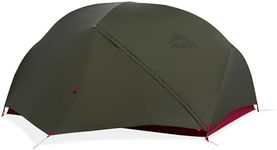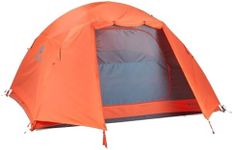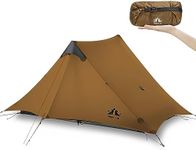We Use CookiesWe use cookies to enhance the security, performance,
functionality and for analytical and promotional activities. By continuing to browse this site you
are agreeing to our privacy policy
Best Two Person Tents
From leading brands and best sellers available on the web.#2

MSR
MSR Elixir 2 Backpacking Tent (Green)
View Product
#3

BIG AGNES
BIG AGNES Copper Spur HV UL Backpacking Tent, 2 Person - Long (Orange)
View Product
#4

MSR
8%OFF
MSR Hubba Hubba NX 2-Person Tent Dark Green
View Product
#5
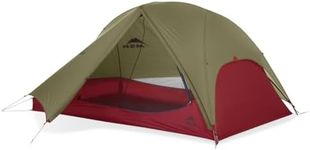
MSR
MSR Freelite 2 Tent - Green
View Product
#6

Vango
Vango Nevis 200 Tunnel Tent Hiking Backpacking Wild Camping | DofE Recommended Kit | Waterproof, Easy Setup, Lightweight, Compact | Alloy Poles & 3000mm HH Material (2 Person)
View Product
#7
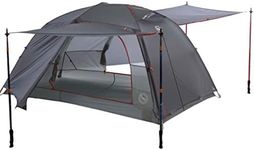
BIG AGNES
Big Agnes Copper Spur HV UL 2 Bikepacking Tent
View Product
#8
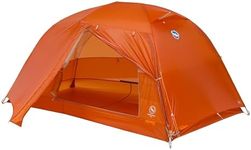
BIG AGNES
Big Agnes Copper Spur UL - Backpacking Tent for Camping, 3 Season, Ultralight, Waterproof, Anodized Poles, Tangelo, 2 Person
View Product
#9
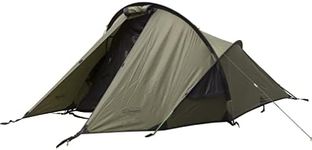
Snugpak
Snugpak | Scorpion 2 | Tent | 2 Person | 5000mm 100% Waterproof Outer (Olive)
View Product
#10

Nemo
Nemo Dagger OSMO Ultralight Backpacking Tent, Birch Bud/Goodnight Gray, 2 Person
View Product
Buying Guide for the Best Two Person Tents
Choosing the right two-person tent involves considering various factors to ensure comfort, durability, and suitability for your specific needs. Whether you're planning a weekend camping trip, a backpacking adventure, or a festival outing, the right tent can make a significant difference in your overall experience. Here are some key specifications to consider when selecting a two-person tent and how to navigate them to find the best fit for you.WeightWeight is a crucial factor, especially if you plan to carry the tent over long distances. Lightweight tents are ideal for backpacking and hiking, as they reduce the load you need to carry. These typically weigh between 2 to 4 pounds. Heavier tents, ranging from 5 to 7 pounds, might offer more durability and space but are better suited for car camping or short hikes. Consider your primary use: if you need to carry the tent for long periods, opt for a lighter model; if not, a slightly heavier tent might offer more comfort and features.
Season RatingSeason ratings indicate the tent's suitability for different weather conditions. A 3-season tent is designed for spring, summer, and fall, providing good ventilation and protection against rain and wind. These are versatile and suitable for most camping trips. A 4-season tent is built to withstand harsher conditions, including snow and strong winds, making it ideal for winter camping or high-altitude adventures. Choose a 3-season tent for general use and a 4-season tent if you plan to camp in extreme weather conditions.
MaterialThe material of the tent affects its durability, weight, and weather resistance. Common materials include nylon and polyester, both of which are lightweight and water-resistant. Nylon is generally lighter and more durable, while polyester is more UV-resistant. The tent poles are usually made of aluminum or fiberglass, with aluminum being stronger and lighter. Consider the conditions you'll be camping in: for frequent use and rough conditions, a tent with high-quality materials like ripstop nylon and aluminum poles is preferable.
SetupEase of setup is important, especially if you need to pitch your tent quickly in changing weather conditions. Some tents come with a freestanding design, which means they can stand without being staked down, making them easier to move and adjust. Others require staking and guy lines for stability. Look for tents with color-coded poles and clips for quicker setup. If you often camp alone or in challenging conditions, a tent with a simple and quick setup process will be more convenient.
VentilationGood ventilation is essential to reduce condensation inside the tent, which can make your sleeping environment damp and uncomfortable. Tents with mesh panels, windows, and vents allow for better airflow. In warmer climates or during summer, a tent with ample ventilation will keep you cooler and more comfortable. If you camp in cooler or wetter conditions, ensure the tent has adjustable vents that can be closed to retain warmth while still allowing some airflow.
Space and ComfortWhile a two-person tent is designed to fit two people, the actual space can vary significantly. Consider the tent's floor dimensions and peak height to ensure it provides enough room for you and your gear. Some tents offer additional vestibules or gear lofts for extra storage. If you prefer more space or plan to store gear inside the tent, look for models with larger floor areas and higher ceilings. For a snug fit, a smaller, more compact tent might be sufficient.
Weather ResistanceWeather resistance is determined by the tent's ability to withstand rain, wind, and other elements. Look for tents with a high waterproof rating (measured in millimeters) and features like a full-coverage rainfly, sealed seams, and a bathtub floor design to keep water out. If you camp in areas prone to heavy rain or strong winds, prioritize tents with robust weatherproofing. For milder conditions, a tent with moderate weather resistance will suffice.
